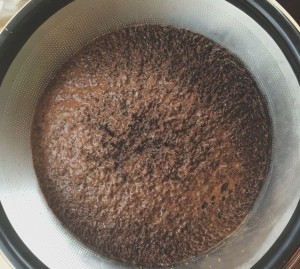Factors affecting Coffee quality: the relationship between Grinding, Coffee extraction ratio and concentration
Coffee extraction is like doing an experiment, controlling the change between solvent (water) and solute (coffee) under environmental variables. How to dissolve the effective substances in coffee according to demand under appropriate conditions is the tireless experimental theme of all coffee lovers. Shotsmrkt. In the name of "coffee addiction", we will regularly sort out the experience and imagination of coffee brewing.

One of the key factors in making a good cup of coffee is grinding. Proper grinding can fully extract the organic substances that produce flavor in coffee, and improper grinding may lead to excessive or insufficient extraction of coffee. Either way, the coffee will not taste good enough and may even have an unpleasant taste. Coffee can be fully extracted only when it is properly ground. About 30% of the coffee is soluble in water, and the remaining 70% is insoluble in water and xylem. The fascinating flavor of coffee is due to the fact that 30% of the organic matter dissolves in water and stimulates taste buds and olfactory bulb cells, including the well-known sour, sweet, bitter and salty (with the addition of a fifth "fresh flavor"). How to adjust the best grinding has become a serious subject that can not be ignored.
However, the drawback is that when 30% of the substance is completely dissolved in the coffee liquid, it is not entirely a good thing, when the coffee tends to be too bitter and astringent (mostly caused by organic substances such as quinine and tannin). Generally speaking, the extraction rate is higher than 22% (this is not an absolute standard), which is called over-extraction. The obvious bitterness and tannins will cover the original delicate flavor of the coffee. The reason why this happens is usually related to too fine grinding and too long reaction time (that is, contact time with water). In the case of espresso, overextracted coffee tends to be dark brown at the edge of the Crema, rather than a typical yellowish brown. The taste is almost masked by bitterness and scorching taste.
On the other hand, if the extraction rate is less than 18%, it can be called insufficient extraction. Because the amount of organic matter dissolved in water is lower than the average level, coffee tastes thin, lacks layers and is prone to dilution, which is characteristic of insufficient extraction. In the case of espresso, the underextracted coffee solution has less Crema on the surface, sometimes even no Crema at all.
In recent years, through a special optical refractometer, the total dissolved solid (TDS,totaldissolvedsolids, unit is mg/L) can be measured according to the refractive index change affected by the amount of solute, and then the weight of soluble organic matter in the solution, which is commonly known as concentration, can be calculated. When a cup of coffee contains less than 1% of the substance from coffee beans, our sense of taste usually determines that the cup of coffee is too light. On the contrary, if the content is higher than 2%, it will generally feel too strong. The differences between nationality and habitual taste are reflected in the concentration standards of different coffee boutique associations. For example, the best concentration set by the American boutique coffee association SCAA is between 1.2% and 1.4%, while by Nordic standards, the preferred concentration is between 1.3% and 1.5%.
When the grinding particles are fine, the contact time is relatively shortened. At the same time, because the particles are finer, the contact area with water becomes larger, and the matter that can be dissolved is also relatively increased. Furthermore, both the degree of coffee grinding and the amount of coffee will directly affect the contact area with the solvent. The more powder, the finer the particles, the larger the contact area with water. When the expected concentration (Strength Concentration) falls in a certain range, the reaction time is relatively shortened.
Of course, for random drinking, the best extraction rate and concentration are not absolutely necessary, and the expensive optical refractometer is not necessarily among the household cooking tools. But mastering every cause of the daily experiment of coffee brewing, excluding problematic elements, can help you get a cup of black water away from bitterness. The quantified concentration and extraction rate are the vanguard of the detection.
Whether it's a hand grinder or an electric grinder, choose grinding tools that can adjust the thickness and uniformity as much as possible, and at the same time, grasp the principles of fresh grinding to avoid oxidation and aroma escape. This week's "coffee addiction test", give yourself a little task, start by looking for the best grinding! Coffee addiction. Also drink and play, with a little bit of obsession.
Important Notice :
前街咖啡 FrontStreet Coffee has moved to new addredd:
FrontStreet Coffee Address: 315,Donghua East Road,GuangZhou
Tel:020 38364473
- Prev

Simply teach you how to make delicious cappuccino how to make cappuccino
1. First brew the coffee powder into an espresso; 2. Heat the milk to 60-70C, pour into a cup about 1pm 2; 3. Beat the milk with a simple foaming machine for 2-3 minutes until the milk is fluffy and fine foam appears, which is nearly twice the original volume. Gently tap the milk cup on the table for a while to layer the foam (that is, separate the steam foam and the hair foam).
- Next

An introduction to the History and types of Coffee Blossom Art Coffee pull
The art of coffee drawing is a method of pouring foamed milk into espresso to get a latte with a design on the surface of the coffee. The art of flower drawing can also be to draw a simple beautification pattern directly on the surface of the foam. The art of drawing flowers is particularly difficult to make all the time, because there are certain requirements for espresso cups and milk. And pull flowers.
Related
- What is the meaning of lactic acid fermentation with coffee bean treatment?
- How to judge the state of foam by sound?
- How does the latte pull out the unicorn pattern? Come to get for a little trick to improve the flower pull!
- Will flower pulling affect the taste of the latte?
- Do you know the history of coffee?
- The difference between honey treatment and sun washing what is raisin honey treatment?
- What kind of milk can a novice use to make coffee foam to keep the foam longer? The correct method and skills of milking tutorial sharing
- Why do washed coffee beans taste sour? Flavor characteristics of washed Coffee
- Introduction to the skill of how to practice the size and height of water injection around the circle of hand-brewed coffee
- How do beginners practice coffee flower drawing from scratch?

